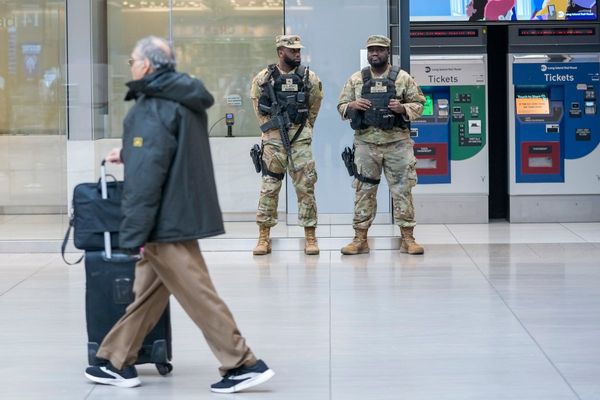
If financial crime were a sector of the U.S. economy, it would be on par with the lodging and food services sector—with money laundering activity accounting for 3.1% of the national GDP in 2023.
Despite its substantial scale, financial crime remains largely a concealed epidemic, extending across jurisdictions and borders and underpinning many of society’s gravest crimes: elder financial exploitation, fraud scams, human trafficking, drug trafficking, and terrorist financing.
Research we have conducted finds that financial crime is an invasive drag on our economy. Our analysis shows that annual U.S. GDP growth would have been more than 0.5 percentage points higher if just fraud losses were reintegrated into the economy.
While financial crime is an immense problem, its impacts are local and deeply personal—often with a disproportionate impact on the most vulnerable segments of our society. Roughly 15% of American households have been victimized by scammers, suffering average losses of $575—a considerable setback for the 37% of all U.S. households that can’t cover an emergency expense of more than $400 with cash or savings. Consequences of such losses, like missed debt payments, can lead to a decline in credit scores, which constrains access to future credit, impedes home ownership, and can even reduce opportunities for transferring wealth to future generations.
To create a fair, trusted, and robust global financial system that supports growth and protects the most vulnerable, addressing financial crime is a global imperative. Financial criminals use the complexity of the financial system and regulatory frameworks to their advantage. They employ sophisticated techniques to mask their illicit activities, skillfully evading anti-financial crime controls and thriving in the gaps between siloed systems.
But if we can align on key priorities to address this problem, use collaboration to break down siloes on a global scale, and leverage technology more effectively, we can get ahead of criminal activity to protect the financial system and the people it serves. Importantly, it can also unlock GDP growth across our economy.
First, it is critical that all stakeholders, including regulators, supervisors, law enforcement, and banks, align on a shared vision to address financial crime that focuses more on outcomes than check-box compliance activities. While there is early progress in this direction—with jurisdictions around the world, including the UK, EU, Canada, and the U.S., evolving their regulatory regimes—there is much more still to do.
More active engagement between policymakers, regulators, the private sector, and law enforcement will be critical to ensure the regulations and supervisory standards that are implemented deprioritize lower-value and technical compliance tasks and focus on higher-quality outputs that provide actionable intelligence to law enforcement. A regulatory framework that elevates financial crime priorities and defines shared measures for effectiveness will reduce regulatory complexity and establish a framework that enhances the real-life outcomes of anti-financial crime efforts.
Second, we can further enhance information sharing within and between the public and private sectors to break down siloes that help financial criminals elude detection. When criminals interact with the traditional finance system, they leave traces in the data that advanced analytics can detect and elevate to the authorities. If we can better connect these dots across banks and jurisdictions, we can thwart fraudsters more effectively, especially by deploying AI-driven technologies.
Third, there should be a clear effort to prioritize the use of advanced data-driven technology that can enable targeted detection of crime-specific patterns. For instance, the clues left by financial criminals associated with human trafficking, materialize differently than the clues left by networks of fraudsters. A focused effort to embrace these innovative approaches, without undue regulatory constraints stemming from the use of artificial intelligence, would help banks provide more actionable intelligence to law enforcement on the crimes that are having the biggest impact on our system.
The societal and economic cost of financial crime is immense. It funds the darkest aspects of society and undermines confidence in the global financial system. It deprives individuals of both economic and emotional security. It holds our economy back from reaching its full potential.
Banks have long stood on the frontlines of the fight against financial crime. We are proud to partner with more than 2,500 financial institutions of all sizes—from community banks to global systemically important banks—in this fight. But make no mistake: Combatting financial crime is a collective responsibility that must be shared by the private sector, policymakers, and law enforcement officials worldwide.
It is only by coming together that we can dismantle silos, craft urgent policy and technology responses, and cultivate a more secure, resilient, and productive economy for everyone.
More must-read commentary published by Fortune:
- Inflation, housing, immigration, taxes: The Harris-Walz economic policy scorecard
- The ‘sustainability recession’ will end soon—and not by choice
- ‘Godmother of AI’ says California’s well-intended AI bill will harm the U.S. ecosystem
- The most underrated leadership skill, according to Jake Sullivan
The opinions expressed in Fortune.com commentary pieces are solely the views of their authors and do not necessarily reflect the opinions and beliefs of Fortune.







